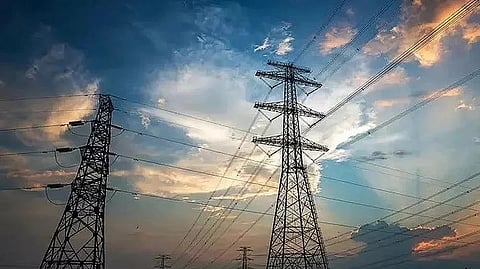

CHENNAI: Amid the spiralling hike in the prices of essential commodities, power consumers are set to pay increased electricity charges which are set to increase by 12 per cent to 52 per cent under various slabs for domestic consumers from Saturday.
The power tariff would be hiked every year on July 1 from 2023-24 to 2026-27 based on inflation for all the consumer categories.
The tariff hike announced by Tamil Nadu Electricity Regulatory Commission (TNERC) comes into effect from September 10.
Domestic consumers irrespective of their electricity consumption would continue to get the first 100 units free of cost.
Consumers who use less than 500 units would get an additional subsidy of Rs 2.25 per unit for 101-200 units slab while those consuming above 500 units would pay Rs 4.50 per unit for the same slab.
If a consumer uses less than 500 units, they would be charged Rs 2.25 per unit for 101-200 units, Rs 4.50 per unit for 201 to 400 units and Rs 6.50 per unit. For those who consume over 500 units, they would be charged Rs 4.50 per unit for 201-400 units and Rs 6 per unit for 401-500 units while 501-600 units would be charged Rs 8 per unit, 601-800 units (Rs 9 per unit), 801-1000 units (Rs 10 per unit) and above 1000 units (Rs 11 per unit).
In the previous tariff, the highest tariff for domestic consumers was Rs 6.60 per unit for those consuming above 500 units.
The residential consumers living in the apartments are set to pay more than those living in the individual houses with the Tangedco creating a new tariff category I-D for common purposes with a flat tariff of Rs 8 per unit and fixed charges of Rs 100 per kilowatt per month.
The individual houses with more than one domestic power connection have to provide a rental or lease agreement if it is rented or leased premises. In the case of same-family living on different floors of individual houses, they have to show family cards in lieu of the rental or lease agreement. If not, they would be charged under LT tariff I-D.
The hut consumer who was getting free power supply will see a hike in the fixed charges to Rs 300 from Rs 145 which would be compensated by the government. Similarly, the agricultural consumers fixed charges which would be paid by the government in the form of subsidy also saw a nominal hike of Rs 3,250 from the previous Rs 2,875.
Following the stiff opposition from the MSME sector to the steep hike proposed on the fixed charges, Tangedco submitted an additional petition reducing the proposed fixed charges for the LT III-B (industries, information technology services). In the order, the TNERC has fixed energy charges at Rs 7/50 per unit while the fixed charges for 0-50 kW is Rs 75 per kW per month (proposed Rs 100/kW/month), above 50-112kW is Rs 150 per kW per month (Rs 325 per kW per month) and above 112 kW (CT Service) is Rs 550 per kW per month (Rs 600 per kW per month). Earlier, the LT industry consumers were paying a flat fixed charge of Rs 35 per month.
The high tension (HT) industry consumers have to pay energy charges of Rs 6.75 per unit and demand charges of Rs 550 per kVA per month. All HT consumers expect HT lift irrigation and temporary supply will pay 25 per cent extra for the power consumption during the peak hours 6 am to 10 am and 6 pm to 10 pm.
In the case of LT tariff for government and private educational institutions, industries and miscellaneous and general purpose consumers, they have to pay the time of the day tariff of 25 per cent extra on energy charges during the peak hours. Until the installation of the ToD meters, those consumers would be billed 25 per cent extra on the 20 per cent of the total energy charges.
Despite the tariff hike, Tangedco continues to face losses. As against the aggregate revenue requirement of Rs 71,940 crore for 2022-23, the utility expects revenue of Rs 59,435 crore from the sale of power with a deficit of Rs 12,504 crore (considering sales at a new tariff for seven months). However, the loss is expected to be reduced to Rs 748 crore in 2023-24.
Visit news.dtnext.in to explore our interactive epaper!
Download the DT Next app for more exciting features!
Click here for iOS
Click here for Android